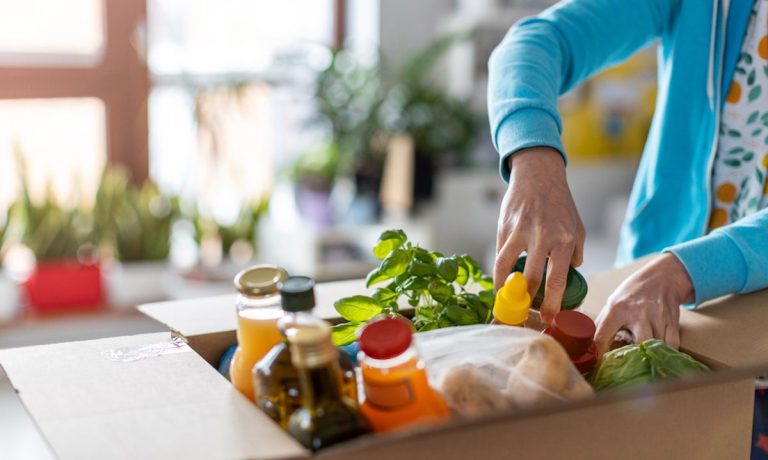
Third-party fulfillment is no longer cutting it for America’s largest grocers. Kroger, the largest pure-play grocer in the country, announced on Tuesday (Oct. 12) that it is partnering with United Kingdom-based grocery technology company Ocado Group to create several new automated warehouses on the East and West Coasts.
The warehouses are part of the grocer’s larger Kroger Delivery initiative, its vertically integrated network of fulfillment centers featuring picking and packing robots and machine learning-planned delivery routes, among other artificial intelligence (AI) capabilities. These new fulfillment centers will include one in the Northeast, two additional locations in California and two new, smaller facilities in South Florida.
The Context
Before the pandemic, eCommerce delivery orders made up an almost negligible fraction of grocery sales. However, as consumers stayed indoors to avoid contagion risk, delivery orders soared. Where previously grocers could feasibly meet delivery demand through partnerships with third parties such as Instacart, as orders became a more significant portion of their business, the challenges of the third-party model became more pressing. Grocers are forced to cede a significant share of their profits to the delivery service, and consumers using these third parties are more loyal to the marketplace than they are to the grocer.
As demand for delivery has endured even with increasing consumer mobility, large grocers are finding ways to bring fulfillment in-house to make the channel more profitable in the long run. Albertsons Companies, Ahold Delhaize USA, and H-E-B, among others, have all tapped micro-fulfillment centers (MFCs) to provide their own eCommerce fulfillment. Walmart, the company with the highest grocery sales in the country, announced its own pilot test of automated fulfillment centers back in January.
By the Numbers
PYMNTS’ research from the report “The Bring-It-to-Me Economy,” created in collaboration with Carat from Fiserv, finds that 27% of consumers are ordering groceries online to be delivered to their homes somewhat or much more often than before the start of the pandemic. Additionally, 46% of consumers are buying more groceries online overall than before March 2020.
More details: Bring-It-to-Me Economy Ascends as Consumers Embrace Home-Centric Lifestyles
What Insiders Are Saying
“Many grocers today are considering switching from Instacart and starting to build their own solution,” Orlee Tal, CEO of Israel-based grocery tech solution Stor.ai, told PYMNTS in an interview. “Providing these tools to the grocers is … another step on the way to gaining back control of their eCommerce business.”
Automated warehouses are just one of the ways grocers are meeting the challenges of the digital shift.
“It’s not a mature enough space for one strategy to pop out as being the one,” Colman Roche, vice president of eCommerce and retail at logistics solutions provider Swisslog, told PYMNTS. “So, I think you’ll see different strategies pursued by national and regional grocers. It’s continuing to be a highly changeable environment.”
Related news: MFCs Shift Focus of Online Grocery to Long-Term Growth
And also: Stor.ai CEO: Sticking the Landing Keeps eGrocery Customers Coming Back